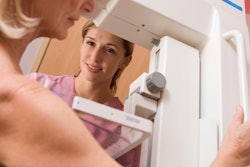Dear Cardiac Imaging Insider,
This year's ECR 2017 offered a wealth of cardiac imaging studies benefiting from new techniques in CT and MRI. Among them, a team from Germany showed how it has improved assessment of myocardial infarction using native T1 and T2 mapping on cardiac MRI scans.
Addressing the difficult but critical question of whether a myocardial infarction is acute or chronic, the researchers found the mapping techniques to be far more reliable than conventional measures such as T2-weighted ratios and extracellular volume fraction measurements. Find out how they did it here.
In CT, a group from the Netherlands used scanners from three different vendors to determine how much iodine dose could be reduced in coronary CT angiography without reducing attenuation in the arteries -- and, further, which scan techniques and technologies were best suited to the task. The results suggest that even patients with renal impairment may be able to undergo CT in the right circumstances. For the rest of the story, click here.
As for contrast controversies, gadolinium was certainly the elephant in the room at ECR 2017. But it wasn't the only contrast issue that came up. A group from Vienna documented significant but transient bouts of hypotension in patients receiving low-osmolar contrast agents.
ECR 2017 also made a strong showing in product launches, with new hardware and software from all of the major vendors to address the needs of cardiac imagers in Europe. You'll find an AuntMinnieEurope.com overview here.
For the rest of the news in cardiac imaging, we invite you to scroll through the links below. And stay tuned for more cardiac imaging news from ECR 2017 and beyond, right here in your Cardiac Imaging Community.



















